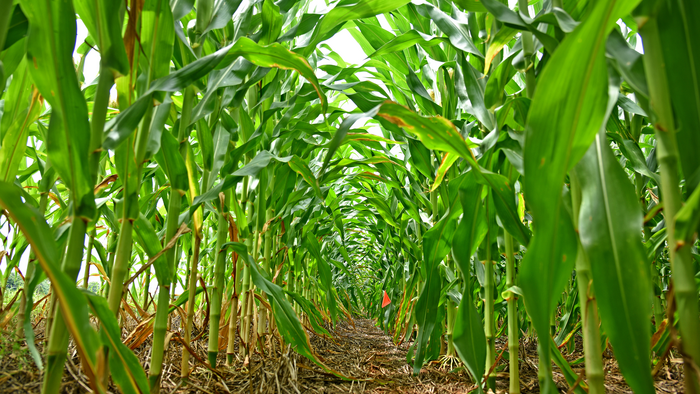Current approaches for triggering safety testing of genetically engineered (GE) crops vary substantially among countries and generally lack scientific merit, argued researchers in a new Science article.
Rather than focusing on the methods or processes used to create GE crops, the researchers proposed that omics-based techniques be used to compare new crops with those that are currently on the market. Any new crops that exhibit questionable molecular profiles would then be subject to safety testing for health or environmental impacts.
“The most important question is, ‘Does the new variety have unfamiliar characteristics,’” explained Fred Gould, PhD, professor at North Carolina State University, co-director of NC State’s Genetic Engineering and Society Center, and the corresponding author of the article. Gould wrote the article (“Toward product-based regulation of crops”) with 15 scientists from across the United States, Mexico, and the Netherlands.
In the United States, the technological method or process used to develop the new variety has generally determined whether it is subject to federal regulation. However, methods for the genetic modification of crops have evolved in recent decades, and the distinction between GE crops versus those that have been conventionally bred has blurred.
Other countries use different criteria. “The European Union (EU) considers any crop with a CRISPR-based modification as GE and subject to regulation, whereas other governments, to varying degrees, trigger regulation on the basis of the size of the genetic change and the source of the inserted genetic material,” explained the authors in their article.
But, as Gould pointed out, “The size of the change made to a product and the origin of the DNA have little relationship with the results of that change; changing one base pair of DNA in a crop with 2.5 billion base pairs, like corn, can make a substantial difference.”
The scientists proposed that omics-based methods, including genomics, transcriptomics, proteomics, epigenomics, and metabolomics, be used to characterize the molecular composition of new and existing crop varieties.
“Genomics could be used to compare the full sequence of a GE plant with that of the specific plant from which it was derived to confirm that no unintended, consequential DNA sequence changes had occurred,” explained the scientists in their article.
“However,” they continued, “an intended change in a single gene could have unintended impacts on other plant traits, with large and small changes likely to be detected by differences in transcriptomes, proteomes, or metabolomes.”
The results of the omics screens would be used to determine whether the product from a new variety is “substantially equivalent” to products already being produced by existing varieties—whether, for example, a new peach variety has molecular characteristics that are already found in one or more existing commercial peach varieties.
“This approach could be used for new varieties developed with GE and non-GE methods,” the scientists suggested, “and efforts could be focused on the omics of the produce from the varieties.”
If the new variety has either no differences or understood differences with no expected health or environmental effects when compared with products of existing varieties, then no safety testing would be recommended, the scientists said. If, however, the product has new characteristics that have the potential for health or environmental effects, or if the product has differences that cannot be interpreted, then safety testing would be recommended.
“The accuracy and completeness of all omics technologies are advancing rapidly,” they wrote. “If omics costs continue to fall, 5 to 10 years from now a full omics screen for most crops could cost less than US$5000.”
But the scientists acknowledge that important considerations remain. “For example, what size and kind of differences between new and existing crop varieties would be substantial enough to trigger regulatory testing?” they wrote. “Such questions are not easy to answer but are categorically similar to difficult regulatory questions about what levels of partially understood, environmental pollutants are acceptable.”
Furthermore, they emphasized that diverse members of the public, along with product developers and regulators, must be involved in these discussions. “In the end, national and international governments will need to make decisions that will be unwelcome to some constituencies, but rigorous and transparent deliberations now can produce new rules with greater public and scientific legitimacy than that of the current rules,” they wrote.



